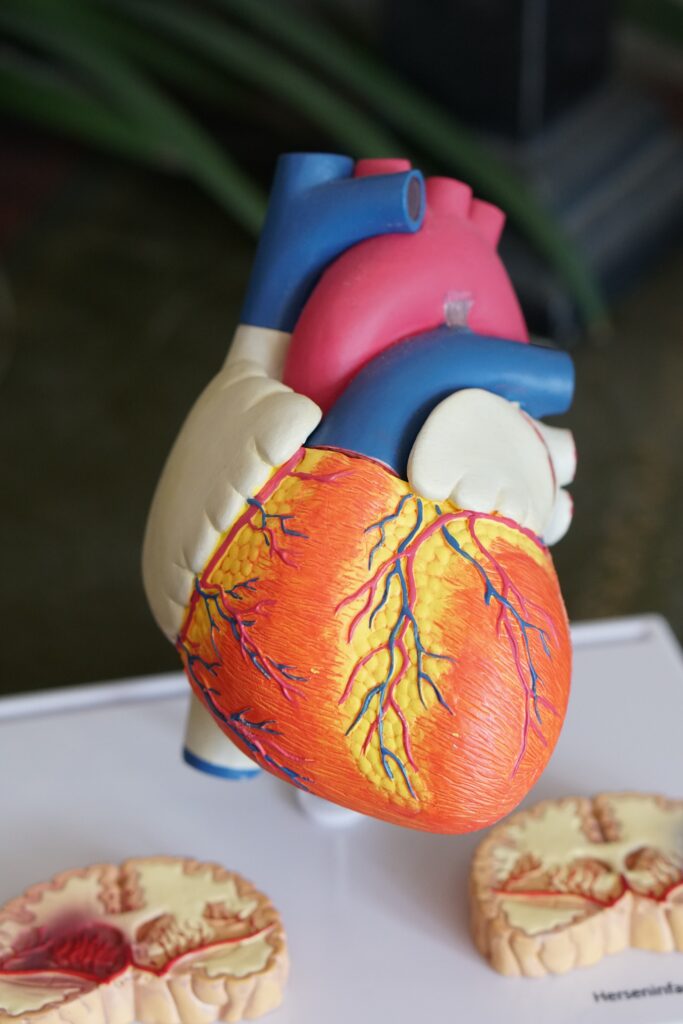L-Arginine
Heinz Lüscher, MD
It has been known for a long time that the amino acid L-arginine is metabolised in the body to nitric oxide (NO), which dilates the blood vessels. Athletes take advantage of this effect, as the improved blood circulation leads to an increase in performance and regeneration can be improved. The positive influence on the cardiovascular system as a vascular protector and blood pressure reducer has also been known since the 1990s. The latest findings now show that L-arginine can also be helpful for hair loss.
What is L-Arginine?
L-Arginine is a semiessential amino acid (you can find out what amino acids are here: Essential Amino Acids). Semiessential means that L-arginine can be synthesized by the human body from other amino acids under normal circumstances. Under certain conditions, however, L-arginine can become essential for the body, i.e. it can no longer produce enough L-arginine. This is the case, for example, from a certain age, in growth phases, during illnesses, during heavy physical activity or stress. Then the organism is dependent on the supply of L-arginine through food or supplements. The amino acid is mainly found in protein-rich foods such as legumes, nuts, oilseeds or meat.
What does the “L” mean?
The letter “L” in front of arginine explains the spatial arrangement of the molecules. “L” stands for laevus (lat. left), further there are the “D-forms”, the “D” stands for dexter (lat. right). The difference lies in the mirror-inverted structure. In the case of amino acids, only the L-form can be used by the body’s own enzymes for metabolism.
How does L-arginine work in the organism?
L-arginine is metabolized in the human body to nitric oxide (NO), which physiologically can be produced exclusively from the semi-essential amino acid L-arginine. Nitric oxide dilates blood vessels and promotes blood flow. The vasodilatory effect has a positive effect on the cardiovascular system, but also on the entire musculature. L-arginine further promotes the release of growth hormones, which leads on the one hand to muscle growth, but also to increased fat burning. Also the protein metabolism is improved by L-Arginine, respectively stimulated. Furthermore, L-arginine plays an important role in the immune system directly, as it stimulates the thymus gland, where defense cells are formed, and also exerts a positive influence on the immune system through its conversion to nitric oxide. L-arginine also plays a role as a neurotransmitter in the nervous system, and at the same time it is a source substance for collagen, connective tissue, important enzymes and hormones
For athletes
Athletes like to take advantage of these effects, because it can increase athletic performance! Due to the improved blood circulation, not only oxygen but also micronutrients are better transported to the muscles. On the one hand, the increased muscle blood flow increases their function, but also the regeneration, on the other hand, the muscle build-up can be stimulated indirectly, because L-arginine stimulates the release of the two growth hormones prolactin and glucagon
For the cardiovascular system
In healthy endothelium of blood vessels (innermost cell layer and lining of the vessels) nitric oxide is produced. In many cardiovascular diseases, L-arginine-dependent nitric oxide formation is impaired. L-arginine can therefore be used as a physiological treatment or prophylaxis for these diseases. Nitric oxide dilates the arteries, which enables optimal blood flow and leads to smooth oxygen and nutrient transport to the individual organs. L-arginine thus indirectly supports the maintenance of healthy endothelium and serves as an important protective mechanism against the dreaded arteriosclerosis (“hardening of the arteries”) and its secondary diseases (e.g. high blood pressure, heart attack and stroke).
in 1998, the research and discovery of the vasoprotective effect of nitric oxide was crowned with the Nobel Prize in Medicine. Nitric oxide, which is formed in the body from L-arginine, has a central role in the prevention or treatment of atherosclerotic diseases

The natural nitric oxide precursor L-arginine has the following properties
- Relaxes and dilates blood vessels
- Improves blood flow and oxygen and micronutrient supply
- Inhibits the calcification of blood vessels
- Prevents vascular occlusion (e.g. heart attack, stroke)
- Lowers blood pressure
- Counteracts platelet aggregation (clumping of blood platelets)
- Relieves the heart muscle (important in heart failure or angina pectoris)
L-arginine can be used in
- Hypertension (increased blood pressure)
- Arteriosclerosis ( hardening of the arteries)
- Anginga pectoris (“heart stenosis”)
Dosage recommendation for cardiovascular
3 x daily 1.5-2 g of pure L-arginine
It should be noted that natural treatment of the mentioned diseases always requires additional measures (e.g. diet, exercise, stress management), supplementation of other micronutrients may also be important. If nitric oxide-releasing drugs (e.g. nitroglycerin) are taken at the same time, undesirable interactions may occur. Consultation with a physician is recommended
Articles and studies on L-arginine and cardiovascular health
https://www.thieme-connect.com/products/ejournals/pdf/10.1055/s-0033-1350779.pdf
https://www.mdpi.com/2072-6643/8/6/364
L-Arginine for hair loss
L-arginine also has a positive influence on the microcirculation, for example, the blood flow in fine skin tissue is promoted and thus also leads to a better micronutrient supply of the hair roots.
The hair roots have an onion-like shape, which is called bulb. The bulb contains the so-called hair papilla, which is well supplied with blood and nutrients via the finest blood vessels. The bulb also contains the matrix from which new hair cells are formed, for which various micronutrients are required.
The improved microcirculation and the better supply of micronutrients important for hair growth, makes L-Arginine interesting for the treatment of hair loss. Prof. Dr. Elmar Wienecke has found that a significant improvement can be achieved with it, but not with androgenetic alopecia (constitutional hair loss).
Hair loss – three main forms
Hair loss (alopecia) can affect both men and women. The problem occurs more frequently in men, but in women the suffering is often significantly greater. Beautiful and healthy hair is for many people, especially for women, the epitome of beauty and femininity. Hair loss is therefore often associated with very great suffering!
There are three main forms of hair loss
- androgenetic alopecia
- Alopecia areata
- diffuse alopecia
The already mentioned predisposition-related hair loss (androgenetic alopecia) is the most common. In this form of hair loss, the hair, or rather the hair roots, react hypersensitively to the male sex hormone dihydrotestosterone (DHT). It is the “baldness” common in men. Androgenetic alopecia is much less common in women
The exact causes of circular hair loss (alopecia areata) have not been conclusively clarified to date, but an autoimmune reaction is usually held responsible, due to which the immune system attacks the hair roots.
The third main form is diffuse hair loss (diffuse alopecia), in which the hair roots are damaged by various causes. This type of hair loss occurs more or less evenly over the entire head, the scalp hair thins increasingly.
The following causes are possible for diffuse hair loss (selection)
- certain medications (e.g., cytostatics (chemotherapy), thyrostatic drugs (for hyperthyroidism), anticoagulants (anticoagulants), lipid-lowering drugs (for elevated blood lipid levels), ovulation inhibitors (“the pill”)
- Infectious diseases (e.g. scarlet fever, influenza, tuberculosis)
- Metabolic diseases (e.g. hyperthyroidism or hypothyroidism)
- Micronutrient deficiencies (e.g. iron)
- Continuous stress
- Hormonal changes (e.g. after childbirth, during menopause)
- Smoking (especially in combination with obesity)
Treatment of hair loss (not androgenetic) with L-arginine
It is recommended to start the therapy already at the beginning of hair loss and thinning hair, but it is also effective in advanced hair loss up to baldness, but then it lasts correspondingly longer. Prof. Dr. Elmar Wienecke recommends a daily dose of 5000mg of pure L-arginine. Since various micronutrients are needed for hair growth, L-arginine is best combined with other substances. It is known, for example, that other amino acids, namely L-cysteine, L-methionine and L-lysine, are jointly responsible for the growth and health of hair, which is why an additional amino acid combination preparation makes sense. A magnesium deficiency, which affects many people in our latitudes, can also promote hair loss and takes over hundreds of other important functions in the body, which is why magnesium should also be part of a hair loss therapy. In certain cases, the additional administration of omega-3 fatty acids and iron is useful. Namely, if the omega-3 index is below 8 and the ferritin values are below 60 in women and below 100 in men
Until the hair grows again (more densely) it also needs a good portion of patience, it takes several months up to a year until the hair splendor visibly improves. The time is of course also dependent on the severity and type of hair loss
Daily dosage distributed throughout the day
5000mg L-Arginine (e.g. 10 Kps Arginine Vida)
6000-10 000mg amino acids (e.g. 12-20 Kps Amino Vida)
500-600 mg elemental magnesium (e.g. 3 Kps Magnesium Vida)
2750 mg omega-3 fatty acids (e.g. 10ml Omega-3 Vida), if the HS Omega-3 Index is below 8
14 mg of well-bioavailable iron (e.g. iron Vida), if ferritin is below 60 (for women) or below 100 (for men)
Suitable L-Arginine products
I recommend pure L-arginine, it is quickly absorbed in the intestine and is quickly available to the body. Products without additives such as thickeners, sweeteners or fillers are preferable. L-arginine products, which are obtained from legumes, are also suitable for vegans
